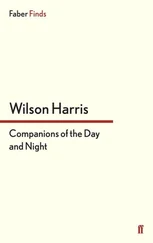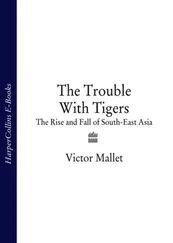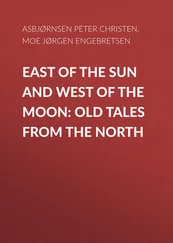By far the most impressive and significant of all Jewish sources surveyed here saw the light of day after the end of the Second Revolt in 135 CE. This is that vast corpus of texts commonly called “Rabbinic Literature,” many of whose foundational, classical texts were produced and redacted in the years following the revolts against Rome and preceding the outbreak of Islam in the early seventh century CE (for all sources mentioned hereafter, consult individual entries in Stemberger 2011). The roots of the Rabbinic movement lie deep in Jewish history and culture; but its distinctive teaching of the dual Torah – the written Torah enshrined in Scripture, and the autonomous Oral Torah transmitted and preserved by the Sages of Judaism (Jaffee 2001) – is explicitly articulated only after 70 CE. Indeed, it was the fall of the Temple which encouraged the growth of Rabbinic ideas, with their agenda of sustained and rigorous study of Torah both Written and Oral as a primary religious duty; statutory prayer; faithful adherence to and performance of the commandments of the Torah; and the master–disciple relationship in the building up of scholarly tradition. Some recent research suggests that Rabbinic Judaism’s journey toward the commanding position it eventually came to hold may have been less straightforward, and more prolonged, than was once held to be the case (Lightstone 2002; Lapin 2006; but see also Rosenfeld 2010); but this view of things must still take into account the fact that the historical evidence available allows us only partial glimpses of non-Rabbinic forms of Judaism which are often difficult to assess. Here we should mention the Synagogue, an institution which seems only gradually to have come under direct Rabbinic supervision: mosaics and inscriptions from sites such as Hammat Tiberias (late third to early fourth century CE); Sepphoris (fifth–sixth century CE), and Beth-Alpha (sixth century CE), to say nothing of Dura-Europos (before mid-third century CE) (Figure 12.2), reveal a rich cultural interaction between Jews and non-Jews, of which several explanations may be offered (Levine 2005). Crucial as these sites are for the investigation of Jewish social and religious conditions, they offer the researcher comparatively little in the way of direct evidence for political history, although they can provide valuable enrichment of the historical sources available in the writings of Greek and Latin authors.
That the Rabbis themselves formed a somewhat enclosed, rather exclusive group, small in numbers and accessible only to those with the necessary expertise to enable them to appreciate and take part in Rabbinic discourse, may nonetheless be granted; and the promulgation of their first written document, the Mishnah (English translation Danby 1933), underscores this point. It consists of a collection of Oral Torah (individual legal norms in conditional and unconditional formulations; disputes; some mini-narratives about named authorities, often illustrating legal points; rules for good conduct; and some parables and wisdom-utterances) deriving from the Tanna’im , the “repeaters” of the Oral Law. It is organized under six main headings or “orders.” These are Zera’im , “seeds” (the laws of agriculture); Mo’ed (the laws of festivals); Nashim (the laws relating to women); Neziqin (literally “damages,” the laws of contract, tort, civil and criminal law); Qedoshim , “holy things” (the laws of sacrifice); and Tohorot (the laws of purity). The orders are subdivided into 63 tractates ( massekhtot ) whose titles alone offer a fair representation of the Rabbinic legal agenda as a whole: this is set out in compressed formulations and often terse language which evidently assumes a fair degree of prior knowledge on the student’s part. Apparent digressions from what may be taken to be the main topics of the tractates are by no means unknown; but concern to establish correct legal norms to be put into practice ( halakhah ) is foregrounded, even though recorded disputes between legal authorities do not always conclude with clear, unambiguous decisions on particular points. The Mishnah’s digressions and mini-narratives appear from time to time to illustrate and discuss an event or series of events in the life of a Rabbi, or to pass comment on some practice or institution; and such information, taken along with the technical legal discussions, suggests that the Mishnah has a broad vision of Jewish life and culture as a whole (Neusner 1981; Avery-Peck and Neusner 2006).
Closely associated with the Mishnah is the Tosefta (English translation Neusner 2002), which it closely resembles in outward form: its six orders are those of the Mishnah, and of the Mishnah’s 63 tractates it lacks only four. The texts of the Mishnah and Tosefta overlap in many places; but the Tosefta presents much extra information not present in the Mishnah, and has traditionally been understood as a supplement (Tosefta, indeed, means “addition”) to the latter. On this view, the Tosefta would have been completed a little later than the Mishnah, say in the early decades of the third century CE; but there is compelling evidence to suggest that at least some parts of the Mishnah may be dependent on the Tosefta. The relationship between the two texts is thus complex, and is certainly a subject of continuing debate in modern research (Cohen 2000); it may be noted, however, that the Tosefta itself never cites as authorities Rabbis who lived later than the early third century CE, so that its final date of redaction is unlikely to lie outside the third century. With rather more in the way of narrative information than the Mishnah, the Tosefta is often investigated as a source for historical information about Palestine in the Roman period up to the third century. While it must always be borne in mind that this text, like the Mishnah, is addressed to teachers and students in Rabbinic society in order to promote, inform, and sustain the continuing aspirations of the Rabbis, judicious, critical analysis of both the Mishnah and the Tosefta can inform the modern reader about Rabbinic attitudes to the Roman authorities and their culture. It also allows us to appreciate Jewish responses to a world imbued with Greco-Roman ideas and aspirations very different from those entertained by many Jews, and to observe how those responses may involve apparent acceptance of Greco-Roman notions “for the sake of peace,” but with an underlying reticence betokening a deeply questioning stance.
Following the adoption of the Mishnah as the basic text for discussion, it was inevitable that a text of such complexity should evoke commentaries. In the West, the Talmud of the Land of Israel, or the Jerusalem Talmud (the “Jerushalmi”) was the first to supply this need. Completed around 400 CE, this massive undertaking discusses most of the Mishnah except for the last two orders (although part of tractate Niddah is discussed). The Mishnah is quoted, and commentary to it supplied from older, Tannaitic sources, interspersed with statements, disputes, and information from the authorities who are creating the commentary (these Rabbis are known as the Amoraim, the “interpreters” or “speakers”). All these are worked together by editors whose identity is unknown to us, the Talmud itself using a combination of Hebrew and Western Aramaic to set forth its predominantly halakhic discussion. This Talmud, however, incorporates frequent short narratives and other non-legal information ( haggadah ) which includes ethical teaching, prayers, wise sayings, and folk memories. There is much here which, with due scholarly caution, can be used to provide access to details of religious, social, and economic life in Palestine in the second and third centuries CE; with due critical analysis, sections of this Talmud may also cast light on historical events in the Late Roman period. As was the case with the Mishnah and the Tosefta, however, the Talmud is not primarily concerned with history; and its use as a source for political events by both Jews and non-Jews remains severely hampered by the lack of a critical edition of its text (Stern 2010). This last point has, in its turn, meant that much less scholarly attention has been devoted to it than to the Babylonian Talmud, which enjoys an unparalleled status within Rabbinic Judaism. This massive document was redacted in places outside Roman control, in the domains of the Parthians and Sasanians. It thus lies outside the general remit of this essay, although it does mention “the West” (which would signify lands under Roman rule) and indicates frequent contact with it. The complexity of the Babylonian Talmud’s redaction, however, creates considerable difficulties for the historian who attempts to discern authentic references to the political situation in Palestine. While some abandon the attempt altogether, others are more sanguine, and argue that detailed literary analysis of individual portions of the text might provide historical material (Kalmin 2005: 205–206).
Читать дальше












